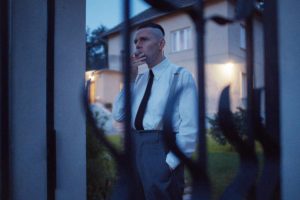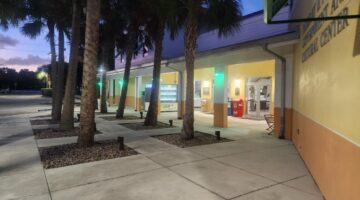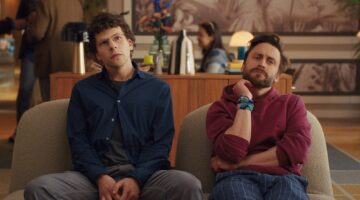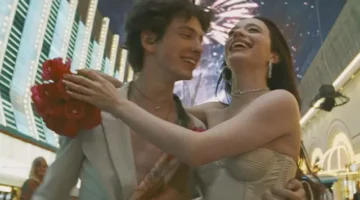Tropic Sprockets / The Zone of Interest
By Ian Brockway
 It’s the time for Oscar Best Picture nominees at the Tropic, with three on screen this week. I reviewed “Poor Things” last week. This week “Zone of Interest” and “American Fiction” are added. Showtimes and trailers for all at Tropiccinema.com.
It’s the time for Oscar Best Picture nominees at the Tropic, with three on screen this week. I reviewed “Poor Things” last week. This week “Zone of Interest” and “American Fiction” are added. Showtimes and trailers for all at Tropiccinema.com.
David Glazer’s “The Zone of Interest,” loosely based on the novel by Martin Amis, is an eerie, jarring work with all the trappings of a horror film. While its grim, matter-of-fact qualities may not be for every audience, it is excellently rendered and polished with the sardonic effect of a mixed media piece by Damien Hirst. [
SS officer Rudolf Höss (Christian Friedel) and Hedwig (Sandra Huller) are residing in a country home right next to Auschwitz with their children.
Several scenes underscore the family bathing in the sun right next to the smoking chimneys of the infamous death camp. They frolic and pick fruit within a verdant green garden. A sprout of yellow sunflowers rise majestically above the sad gray wall of annihilation and despair that is the camp.
Hedwig has several fur coats and dresses pre-owned by the inmates. Each day Hedwig sends the children to school with a happy lunch and a Heil Hitler and Rudolf trots over just a mere three steps next door to work. The sons bathe in the ocean and their complexion is shown as a cadaverous gray blue as if they are vampires or messengers of Death.
Rudolf spends hours on the phone with administrators. He is distant and formal. He wants to assume operations, but there are bureaucratic dilemmas and pitfalls.
The children swim in the lake and become plagued by a red rash. Rudolf sneezes black soot and he is sickened by nausea.
As they dine al fresco and pick berries, the cries of those gassed or shot can be heard. The robust greens, the kohlrabi are nourished by the pain and sadness of the dying and the dead. Brilliant red flowers from the garden bleed into fields of red— mournful and threatening incarnations of Damien Hirst’s spin art paintings or Warhol’s silkscreens. The red flowers also echo David Lynch’s “Blue Velvet.” Behind the florid expression of beauty, a rotten horror exists within.
The family is free to attend parties within buttercream palaces, while just down the street there is only gray death.
The scenes of botanical beauty are interspersed with infrared night scenes of the daughter hiding cancerous looking apples: a demonic twist on “Hansel and Gretel” or “Little Red Riding Hood.”
Glazer’s final stroke is the interior of the camp as a tourist attraction after hours with workers cleaning and scrubbing the ovens which creates a scarifying montage of macabre sorrow and disbelief.
Write Ian at [email protected]
[livemarket market_name="KONK Life LiveMarket" limit=3 category=“” show_signup=0 show_more=0]





No Comment